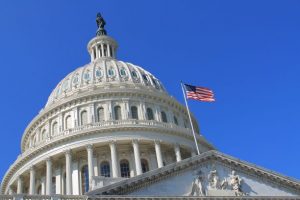
SHARE THIS ARTICLE:
House Confirms Fiscal Year Spending 2020 for Lyme & Other Vector-Borne Diseases
 The 116th Congress House Committee on Appropriations submitted a report in explanation of bill H.R. 2740, the Omnibus that funds Health and Human Services (HHS) including the National Institute of Health (NIH) and the Centers for Disease Control (CDC), and outlines the final legislative language and designation of funds for vector-borne diseases, including Lyme disease, for fiscal year ending September 30, 2020.
The 116th Congress House Committee on Appropriations submitted a report in explanation of bill H.R. 2740, the Omnibus that funds Health and Human Services (HHS) including the National Institute of Health (NIH) and the Centers for Disease Control (CDC), and outlines the final legislative language and designation of funds for vector-borne diseases, including Lyme disease, for fiscal year ending September 30, 2020.
Highlights from the House Explanatory Statement include:
- The Committee encourages NIAID to intensify research and development on Lyme and other tick-borne diseases, including research that will increase understanding of the full range of processes that cause Lyme disease infection. This should include research on the physiology of Borrelia burgdorferi and Borrelia mayonii, including the mechanisms of possible persistent infection, potential treatment protocols for extended or long-term symptoms attributed to Lyme and other tick-borne diseases, and development of more sensitive and accurate diagnostic tests for Lyme and tick-borne diseases, including next generation polymerase chain reaction (PCR) and new testing methodologies such as proteomics and metabolomics. The Committee directs NIAID to support research on the heightened incidence of Lyme Disease and vector-borne diseases due to global warming.
- The Committee encourages NIH to improve early diagnosis and treatment of Lyme and other tick-borne diseases (TBD) to prevent the development of late stage disease and more serious and longer-term disability, but also intensify research on diagnosis and treatment of late stage and chronic disease. In addition to development of highly sensitive and specific diagnostics for all stages of disease, a goal should be to develop diagnostics with appropriate sensitivity and specificity for the detection of infection. Treatments also should be developed for all stages of Lyme and other TBD, determining optimal combinations of new candidate or older drugs and exploring novel combinations.
A statement from a Congressional spokesperson further clarifies that, “The agreement includes an increase and encourages CDC, in coordination with NINDS and NIMH, to include in its surveillance the long-term effects. CDC is also encouraged to coordinate with NIH on publishing reports that assess prevention, treatment, diagnostic advancements, and links between tick-borne disease and psychiatric illnesses. CDC is encouraged to focus efforts in endemic areas as well as areas not yet considered endemic.”
Thank you to Congressman Chris Smith (NJ-4) for working with LDA to get some of this language included. Thank you to other advocates and legislators who also provided input into the process.
The CDC received a $2,000,000 increase for Lyme disease.
Click here to view the full H. Rept. 116-62 Explanatory Statement
Click here to view HR 1865 Division A





